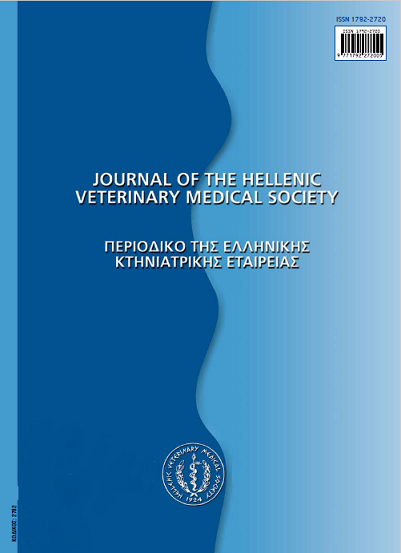Electroretinography in small animal practice
Résumé
During the last years, clinical electrophysiology has considerably improved, allowing the evaluation of the retina and visual pathways. In small animal practice, electroretinography is more useful than other diagnostic techniques for the assessment of retinal function, because of the fact that this method doesn't require patient's cooperation. Electroretinography (ERG) is an electrophysiological technique, which measures the retinal action potentials in response to light stimulation. Flash ERG evaluates the function of outer retina and is performed by the using of flashlight units that uniformly stimulate the retina. The evaluation of ERG requires the well understanding of the morphology as well as the physiologic function of the retina. Furthermore, a number of factors, which can influence the quality of the ERG, are totally controlled during the procedure. Because of the fact that electroretinographic values vary, according to many factors and different diagnostic protocols, comparison of results, obtained from different laboratories, would be difficult. Therefore, each veterinary ERG laboratory obtains its own normal values. ERG is indicated, when retinal disease is suspected. ERG can also help to identify the cause of blindness. In small animal practice, the majority of ERGs are performed on candidates for cataract surgery. Other ERG indications include the early diagnosis of central or generalized progressive retinal atrophy (PRA), the differential diagnosis between the sudden acquired retinal degeneration (SARD) and optic neuritis, the glaucoma and many cases of retinal detachments. Furthermore, ERG is used to evaluate the progression of many retinal disorders.
Article Details
- Comment citer
-
LIAPIS (Ι. Κ. ΛΙΑΠΗΣ) I. K. (2017). Electroretinography in small animal practice. Journal of the Hellenic Veterinary Medical Society, 55(4), 331–341. https://doi.org/10.12681/jhvms.15142
- Numéro
- Vol. 55 No 4 (2004)
- Rubrique
- Review Articles
Authors who publish with this journal agree to the following terms:
· Authors retain copyright and grant the journal right of first publication with the work simultaneously licensed under a Creative Commons Attribution Non-Commercial License that allows others to share the work with an acknowledgement of the work's authorship and initial publication in this journal.
· Authors are able to enter into separate, additional contractual arrangements for the non-exclusive distribution of the journal's published version of the work (e.g. post it to an institutional repository or publish it in a book), with an acknowledgement of its initial publication in this journal.
· Authors are permitted and encouraged to post their work online (preferably in institutional repositories or on their website) prior to and during the submission process, as it can lead to productive exchanges, as well as earlier and greater citation of published work.




